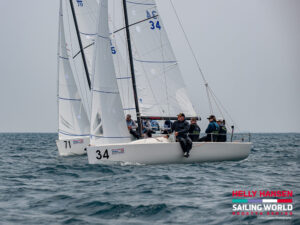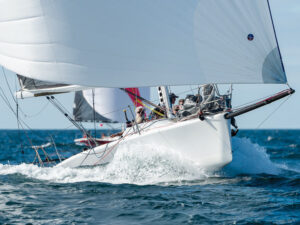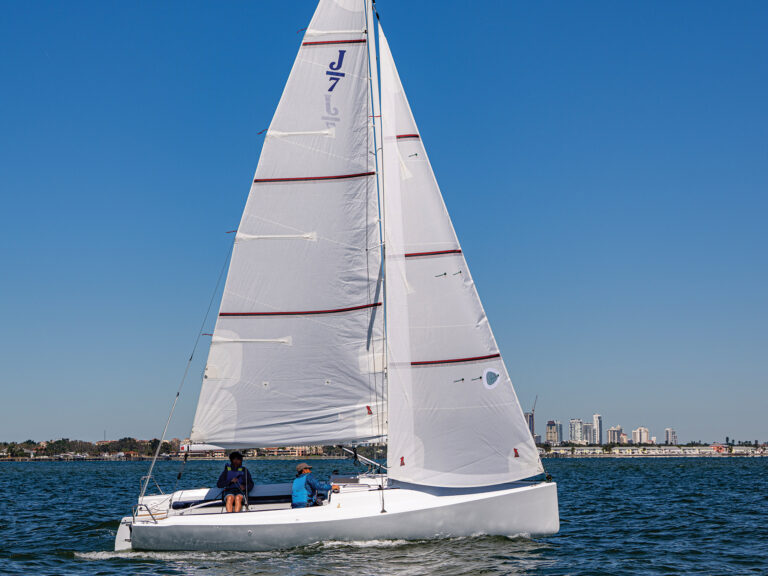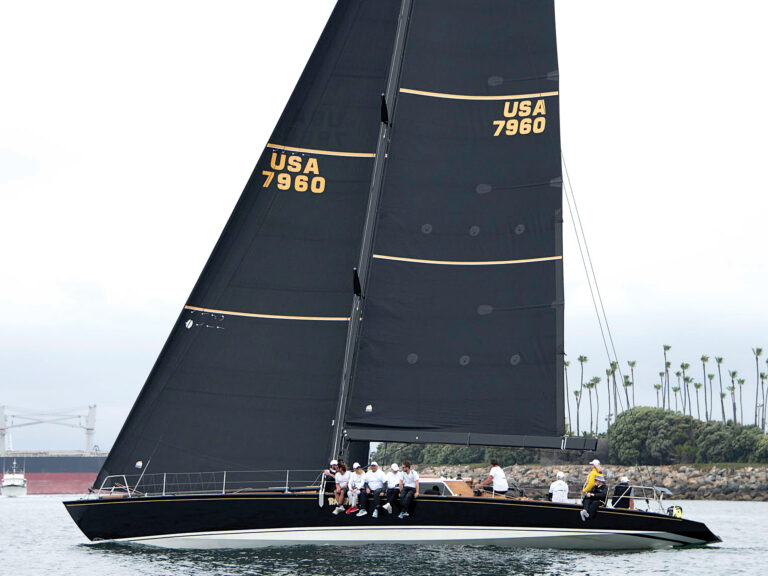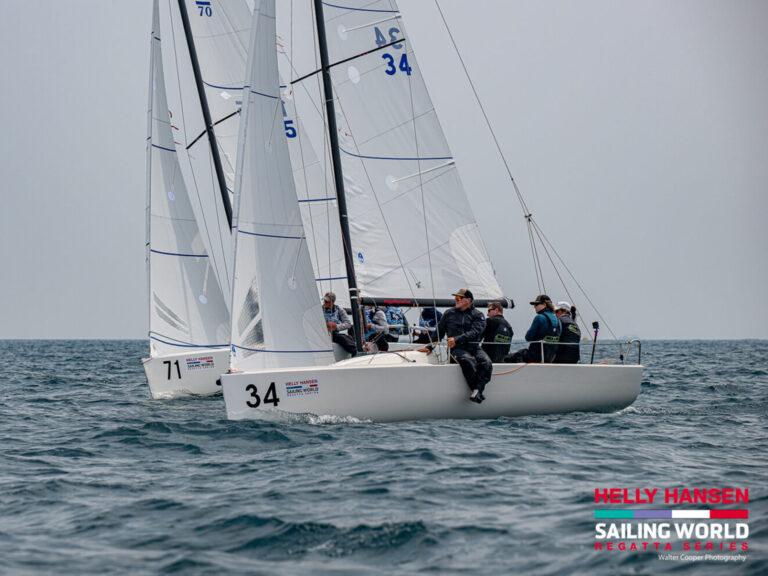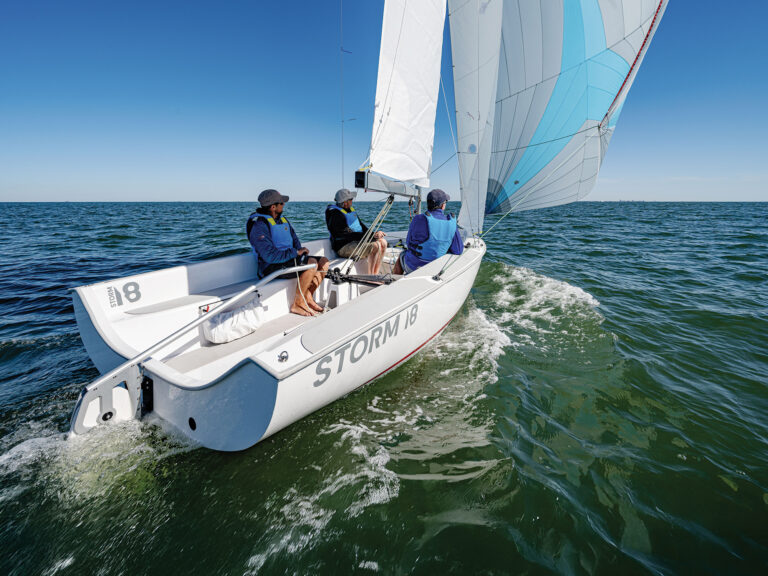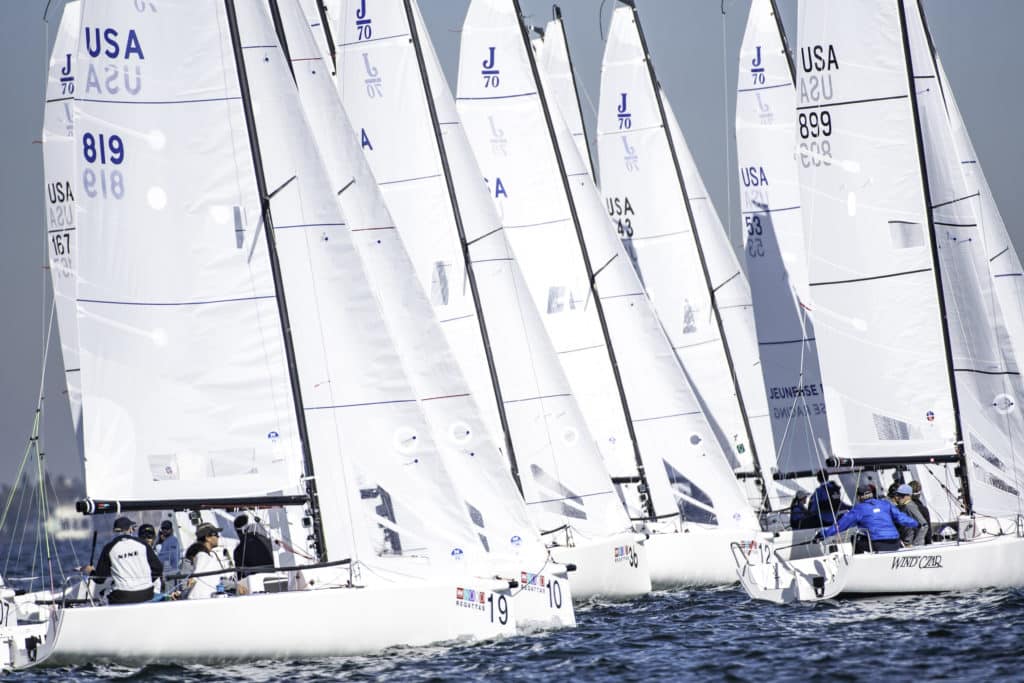
This is the sixth and final installment in a series of articles outlining important changes in the new rules. We’ll cover three changes that make the rules governing the race and protest committee more competitor friendly. We’ll also discuss inconsistencies that have been identified in one of the new rules and the unusual advisory statement issued that US Sailing has issued as a result.
Rule 30.3 As many of you who have read this column over the years know, I am firmly opposed to use of the Black Flag Rule to keep an overeager fleet behind the line in the final countdown to a start. My preference is to see the Black Flag Rule removed from the rulebook. However, this year a new rule has been added that, while similar to the Black Flag Rule, is much fairer to competitors and far simpler for race committees. What’s more, many tests indicate that it will usually control a fleet just as effectively as the Black Flag Rule. The new rule is Rule 30.3, the U Flag Rule.
Rule 30.3, U Flag Rule reads as follows: If flag U has been displayed, no part of a boat’s hull, crew or equipment shall be in the triangle formed by the ends of the starting line and the first mark during the last minute before her starting signal. If a boat breaks this rule and is identified, she shall be disqualified without a hearing, but not if the race is restarted or resailed.
The U Flag Rule differs from the Black Flag Rule in two important respects. Unlike the Black Flag Rule, a boat that breaks the U Flag Rule is not disqualified if there is a general recall or if the race is postponed or abandoned either before or at any time after the starting signal. This will mean that far fewer DSQs will be handed out under the U Flag Rule than would be the case under the Black Flag Rule. Also, the U Flag Rule simplifies life for the race committee because when flag U is used there is no need to post numbers on the race committee starting line vessel and never a need to score boats DNE.
From 2013-2016, the U Flag Rule was included in Appendix L, the Sailing Instructions Guide, as an optional sailing instruction. This led to its being extensively tested over the past four years, The U Flag Rule was almost always as effective in controlling the fleet as the Black Flag Rule, and it gained acceptance among competitors and race officials.
I hope to see the Black Flag Rule removed from the rulebook when the rules are next revised in 2021. However, in the meantime, you can help to make sure that it is not used by encouraging your club to schedule a party during which the featured event will be a ceremonial burning of the black flag. If you succeed, send me a photo of the ceremony and I will encourage Sailing World to publish it.
Rule 33(a) Clear race committee signals are always helpful. To signal a change in the next leg of the course, the race committee must always display flag C with repeated short sound signals. Last year, when the committee signaled a change in the direction of the next leg of the course, Rule 33(a) permitted the display, along with flag C, of either the new compass bearing of the next leg or a green triangle for a change to starboard or a red rectangle for a change to port. Now, a change in Rule 33(a) gives the committee the option to display both of these signals.
The signals for a change in the length of the next leg have not been changed. They are still flag C with repetitive sounds and a placard with a “+” if the length is increased or a “-” if the length is decreased.
Rule 61.2 A competitor-friendly change in Rule 61.2 is intended to reduce the chances that a protest will be declared invalid because the information on the protest form is inaccurate. Last year, the protestor was required to identify in the written protest “the incident including where and when it occurred,” and, if there was an error in what the protestor wrote on the protest form about where and when the incident occurred, that error could not be corrected. It’s always easy to remember the incident, but protestors often make an error about where and when the incident occurred. When the course is twice around, they may state that the incident occurred during the first lap, when it actually occurred during the second; or, when there are several races in a day, they may state that it occurred in the second race when it actually happened in the third. Rule 61.2 still requires the protestor to “identify the incident” on the written form, but she can supply or correct the information about “when and where” the incident occurred either before or during the hearing.
Rule 64.4(b) There is one more, quite unusual, feature of the new rules that I want to bring to your attention. An inconsistency between Rules 63.1 and 64.4(b) exists, and Rule 64.4(b) has undesirable consequences. Let me explain.
There are several new rules involving support persons. A hearing can be held under Rule 60.3(d) to consider whether a support person has broken a rule, and a hearing can be held under Rule 69 to consider whether a support person has committed an act of misconduct. The only party to such a hearing is the support person. If the protest committee decides that the support person has broken a rule, then Rule 64.4 describes the actions that the committee may take.
A support person does not have a score, so the usual penalty of disqualification would not make sense. Instead, Rule 64.4(a)(1) allows the committee to warn the support person or to penalize the support person with one of the punitive actions listed in Rules 64.4(a)(2) or (3). So far so good.
The troublesome part of Rule 64.4 is 64.4(b), which permits the protest committee to penalize the boat associated with the support person for the breach of a rule by the support person by changing the boat’s score in a single race, up to and including DSQ. But, if you read Rules 63.1 and the first sentence of Rule 64.1, you find that a boat cannot be penalized unless (1) she is a party to a protest hearing, or (2) the rule under which she is penalized is in the list of rules in Rule 63.1. A hearing under either Rule 60.3(d) or Rule 69 is not a “protest hearing,” and Rule 64.4(b) is not in the list of rules in Rule 63.1. So, despite what Rule 64.4(b) states, the rules do not permit a boat or competitor to be penalized under Rule 64.4(b).
Rule 63.1 is a rule that can be changed by the notice of race or the sailing instructions. So it would be easy to change Rule 63.1 by adding Rule 64.4(b) to the list of rules in Rule 63.1. However, a fire storm of opposition has arisen in the United States to Rule 64.4(b), and the US Sailing Race Administration Committee has issued the following unprecedented statement:
Race officials and organizing authorities in the United States are strongly advised: 1. Not to penalize a competitor under rule 64.4(b) because we believe that it is not permitted by the rules; and 2. Not to use the notice of race or sailing instructions to change rule 63.1 to permit them to penalize a competitor under 64.4(b), because doing so removes due process safeguards that protect a boat or competitor.
The World Sailing Racing Rules Committee meets in November, and US Sailing will make a proposal to require that no boat be penalized for the actions of one of her support persons unless she is protested for breaking a rule and found in a protest hearing to have done so. It is possible that Rule 64.4(b) will be changed by World Sailing as soon as January 1, 2018.
If, after reading this series of articles, you still have some questions about the changes made in the 2017-2020 edition of The Racing Rules of Sailing, you may find the Study Version of the new rules helpful. It is an Adobe Acrobat “pdf” file that contains the reasons for each proposal that resulted in a change in one of the racing rules or the definitions. You can access this file here.
– – –
E-mail for Dick Rose may be sent to [email protected]

